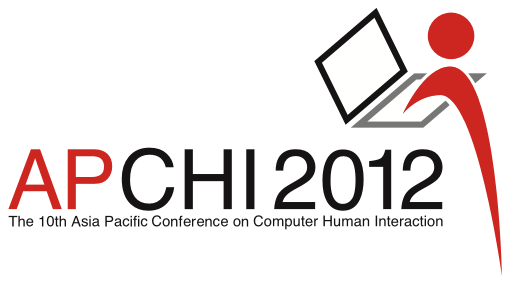The Past 100 Years of the Future: A Deep Dive into HCI in Sci-Fi Movies and Television
In the realm of technological advancements and human-computer interaction (HCI), few have delved as deeply into the intersection of science fiction and real-world applications as Aaron Marcus. His keynote, "The Past 100 Years of the Future: Human-Computer Interaction in Science-Fiction Movies and Television," [PDF] presented at the APCHI 2012 conference, offers a comprehensive exploration of how science fiction has both predicted and influenced the trajectory of HCI developments.
Science Fiction as a Predictor of HCI Trends
Science fiction, with its imaginative narratives and futuristic settings, has long been a harbinger of technological advancements. From the early days of cinema, where movies like Melies' "A Trip to the Moon" captivated audiences, to modern blockbusters that showcase advanced AI and virtual realities, the genre has consistently provided a glimpse into potential futures. Marcus's work underscores how these fictional portrayals often precede real-world technological breakthroughs. For instance, concepts like video phones, wall-based television displays, and AI-based robots, once relegated to the realm of fiction, are now integral parts of our daily lives.
The symbiotic relationship between science fiction and technological advancements, particularly in the realm of human-computer interaction (HCI), cannot be overstated. Science fiction has consistently served as a canvas upon which our hopes, fears, and predictions about technology are painted. This is especially evident when we delve into the portrayal of hacking and the image of hackers in science fiction movies of the 1980s.

During the 1970s and 1980s, as computers began to permeate households and businesses, the concept of hacking and the hacker persona started to take shape in the public consciousness. Science fiction films of this era were quick to latch onto these emerging trends, offering a speculative lens into the world of digital espionage, cyber warfare, and the ethical dilemmas posed by unchecked technological prowess.
One of the earliest and most iconic representations of hacking in science fiction is the 1983 film "WarGames." In this movie, a young computer whiz, played by Matthew Broderick, inadvertently hacks into a U.S. military supercomputer, mistaking it for a video game. The film not only highlighted the potential dangers of unsupervised computer access but also introduced audiences to the concept of "war dialing" – a hacking technique that involves calling multiple phone numbers to find a modem that's connected to a computer.
Another seminal film from this era is "Tron" (1982), which delves into the digital realm in a visually groundbreaking manner. The protagonist, a computer programmer, is digitized and pulled into a computer system where he interacts with programs, faces off against malevolent software, and navigates the digital landscape. "Tron" not only showcased the potential of computer graphics in filmmaking but also touched upon themes of control, surveillance, and the blurred lines between man and machine.
The 1985 movie "Hackers" further cemented the image of the hacker as a rebellious, anti-establishment figure, often pitted against powerful corporations or government entities. The film delved into the subculture of hacking, complete with its own jargon, ethics, and aesthetics. It presented a world where knowledge was power, and those who could navigate the digital realm held immense sway.
These films, among others, played a pivotal role in shaping public perceptions of hackers and the broader implications of HCI. They foresaw a world where computers weren't just passive tools but active entities, capable of influencing geopolitics, societal structures, and individual destinies. The portrayal of hacking in these movies served as both a cautionary tale and a celebration of the limitless potential of human-computer symbiosis.
In retrospect, the 1980s were a watershed moment for HCI in science fiction. The movies from this era not only reflected the zeitgeist of the times but also laid the groundwork for subsequent discussions on cybersecurity, digital ethics, and the ever-evolving relationship between humans and computers.
The Evolution of Science Fiction in Media
Over the past 120 years, science fiction has undergone significant evolution. Initially focused on interplanetary travel and rocket ships, the genre has expanded to encompass a broader range of topics, including future consumer products, societal issues, and emerging technologies like exoskeletons and artificial intelligence. This shift is not just limited to Hollywood; countries like China, India, South Korea, and Japan have also made significant contributions to the genre, reflecting a global interest in envisioning the future of HCI.
Learning from Science Fiction: Usability, Usefulness, and Appeal
One of the most intriguing aspects of Marcus's keynote is the exploration of how science fiction movies and television have incorporated (or sometimes failed to incorporate) fundamental principles of user-centered design. By analyzing various films and TV shows, Marcus highlights the importance of usability, usefulness, and appeal in HCI. These fictional portrayals serve as informal "test-beds" for new HCI technologies, offering valuable insights for professionals in the field.
The Future of HCI Through the Lens of Science Fiction
Marcus's work is not just a retrospective look at the past; it also offers a vision for the future. By examining recent films and TV shows, such as “Space Sweepers” (South Korea, 2021) and “Dune” (USA, 2021), Marcus provides insights into the potential directions HCI might take in the coming years. These modern portrayals, combined with the rich history of science fiction, offer a roadmap for HCI professionals, guiding them towards innovations that are both technologically advanced and user-centric.
Aaron Marcus's exploration of the interplay between science fiction and HCI is a testament to the genre's power to inspire and predict technological advancements. As we stand on the cusp of a new era in human-computer interaction, Marcus's work serves as a beacon, illuminating the path forward and reminding us of the limitless possibilities that lie ahead. As science fiction continues to shape our understanding of technology, one thing is clear: the future of HCI is as boundless as our imagination.










